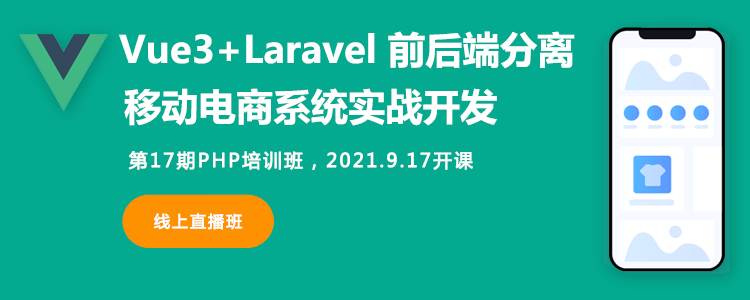本篇文章给大家带来的内容是关于React和Redux的动态导入(附代码),有一定的参考价值,有需要的朋友可以参考一下,希望对你有所帮助。
代码分离与动态导入
对于大型 Web应用程序,代码组织非常重要。 它有助于创建高性能且易于理解的代码。 最简单的策略之一就是代码分离。 使用像 Webpack 这样的工具,可以将代码拆分成更小的部分,它们分为两个不同的策略,静态和动态。
通过静态代码分离,首先将应用程序的每个不同部分作为给定的入口点。 这允许 Webpack 在构建时将每个入口点拆分为单独的包。 如果我们知道我们的应用程序的哪些部分将被浏览最多,这是完美的。
动态导入使用的是 Webpack 的 import 方法来加载代码。由于 import 方法返回一个 promise,所以可以使用async wait 来处理返回结果。
// getComponent.js
async function getComponent() {
const {default: module} = await import('../some-other-file')
const element = document.createElement('p')
element.innerHTML = module.render()
return element
}虽然这是一个很不自然的例子,但是可以看到这是一个多么简单的方法。通过使用 Webpack 来完成繁重的工作,我们可以将应用程序分成不同的模块。当用户点击应用程序的特定部分时,才加载我们需要的代码。
如果我们将这种方法与 React 提供给我们的控制结构相结合,我们就可以通过延迟加载来进行代码分割。这允许我们将代码的加载延迟到最后一分钟,从而减少初始页面加载。
使用 React 处理延迟加载
为了导入我们的模块,我们需要决定应该使用什么 API。考虑到我们使用 React 来渲染内容,让我们从这里开始。
下面是一个使用 view 命名空间导出模块组件的简单API。
// my-module.js
import * as React from 'react'
export default {
view: () => <p>My Modules View</p>
}现在我们使用导入方法来加载这个文件,我们可以很容易地访问模块的 view 组件,例如
async function getComponent() {
const {default} = await import('./my-module')
return React.createElement(default.view)
})然而,我们仍然没有使用 React 中的方法来延迟加载模块。通过创建一个 LazyLoadModule 组件来实现这一点。该组件将负责解析和渲染给定模块的视图组件。
// lazyModule.js
import * as React from "react";
export class LazyLoadModule extends React.Component {
constructor(props) {
super(props);
this.state = {
module: null
};
}
// after the initial render, wait for module to load
async componentDidMount() {
const { resolve } = this.props;
const { default: module } = await resolve();
this.setState({ module });
}
render() {
const { module } = this.state;
if (!module) return <p>Loading module...</p>;
if (module.view) return React.createElement(module.view);
}
}以下是使用 LazyLoadModule 组件来加载模块的视图方式:
// my-app.js
import {LazyLoadModule} from './LazyLoadModule'
const MyApp = () => (
<p className='App'>
<h1>Hello</h1>
<LazyLoadModule resolve={() => import('./modules/my-module')} />
</p>
)
ReactDOM.render(<MyApp />, document.getElementById('root'))下面是一个线上的示例,其中补充一些异常的处理。
https://codesandbox.io/embed/...
通过使用 React 来处理每个模块的加载,我们可以在应用程序的任何时间延迟加载组件,这包括嵌套模块。
使用 Redux
到目前为止,我们已经演示了如何动态加载应用程序的模块。然而,我们仍然需要在加载时将正确的数据输入到我们的模块中。
让我们来看看如何将 redux 存储连接到模块。 我们已经通过公开每个模块的视图组件为每个模块创建了一个 API。 我们可以通过暴露每个模块的 reducer 来扩展它。 还需要公开一个名称,在该名称下我们的模块状态将存在于应用程序的store 中。
// my-module.js
import * as React from 'react'
import {connect} from 'react-redux'
const mapStateToProps = (state) => ({
foo: state['my-module'].foo,
})
const view = connect(mapStateToProps)(({foo}) => <p>{foo}</p>)
const fooReducer = (state = 'Some Stuff') => {
return state
}
const reducers = {
'foo': fooReducer,
}
export default {
name: 'my-module',
view,
reducers,
}上面的例子演示了我们的模块如何获得它需要渲染的状态。
但是我们需要先对我们的 store 做更多的工作。我们需要能够在模块加载时注册模块的 reducer。因此,当我们的模块 dispatche 一个 action 时,我们的 store 就会更新。我们可以使用 replaceReducer 方法来实现这一点。
首先,我们需要添加两个额外的方法,registerDynamicModule 和 unregisterDynamicModule 到我们的 store 中。
// store.js
import * as redux form 'redux'
const { createStore, combineReducers } = redux
// export our createStore function
export default reducerMap => {
const injectAsyncReducers = (store, name, reducers) => {
// add our new reducers under the name we provide
store.asyncReducers[name] = combineReducers(reducers);
// replace all of the reducers in the store, including our new ones
store.replaceReducer(
combineReducers({
...reducerMap,
...store.asyncReducers
})
);
};
// create the initial store using the initial reducers that passed in
const store = createStore(combineReducers(reducerMap));
// create a namespace that will later be filled with new reducers
store.asyncReducers = {};
// add the method that will allow us to add new reducers under a given namespace
store.registerDynamicModule = ({ name, reducers }) => {
console.info(`Registering module reducers for ${name}`);
injectAsyncReducers(store, name, reducers);
};
// add a method to unhook our reducers. This stops our reducer state from updating any more.
store.unRegisterDynamicModule = name => {
console.info(`Unregistering module reducers for ${name}`);
const noopReducer = (state = {}) => state;
injectAsyncReducers(store, name, noopReducer);
};
// return our augmented store object
return store;
}如你所见,代码本身非常简单。 我们将两种新方法添加到我们的 store 中。 然后,这些方法中的每一种都完全取代了我们 store 中的 reducer。
以下是如何创建扩充 store:
import createStore from './store'
const rootReducer = {
foo: fooReducer
}
const store = createStore(rootReducer)
const App = () => (
<Provider store={store}>
...
</Provider>
)接下来,需要更新 LazyLoadModule ,以便它可以在我们的 store 中注册 reducer 模块。
我们可以通过 props 获取 store。这很简单,但这意味着我们每次都必须检索我们的 store,这可能会导致 bug。记住这一点,让 LazyLoadModule 组件为我们获取 store。
当 react-redux <Provider /> 组件将 store 添加到上下文中时,只需要使用 contextTypes 在LazyLoadModule 中获取它。
// lazyModule.js
export class LazyLoadModule extends React.component {
...
async componentDidMount() {
...
const {store} = this.context
}
}
LazyLoadModule.contextTypes = {
store: PropTypes.object,
}现在可以从 LazyLoadModule 的任何实例访问我们的 store。 剩下的唯一部分就是把 reducer 注册到 store 中。 记住,我们是这样导出每个模块:
// my-module.js
export default {
name: 'my-module',
view,
reducers,
}更新 LazyLoadModule 的 componentDidMount和 componentWillUnmount 方法来注册和注销每个模块:
// lazyModule.js
export class LazyLoadModule extends React.component {
...
async componentDidMount() {
...
const { resolve } = this.props;
const { default: module } = await resolve();
const { name, reducers } = module;
const { store } = this.context;
if (name && store && reducers)
store.registerDynamicModule({ name, reducers });
this.setState({ module });
}
...
componentWillUnmount() {
const { module } = this.state;
const { store } = this.context;
const { name } = module;
if (store && name) store.unRegisterDynamicModule(name);
}
}线上示例如下:
https://codesandbox.io/s/znx1...
总结:
通过使用 Webpack 的动态导入,我们可以将代码分离添加到我们的应用程序中。这意味着我们的应用程序的每个部分都可以注册自己的 components 和 reducers,这些 components 和 reducers将按需加载。此外,我们还减少了包的大小和加载时间,这意味着每个模块都可以看作是一个单独的应用程序。
本篇文章到这里就已经全部结束了,更多其他精彩内容可以关注PHP中文网的JavaScript视频教程栏目!
以上就是React和Redux的动态导入(附代码)的详细内容,更多请关注php中文网其它相关文章!



















